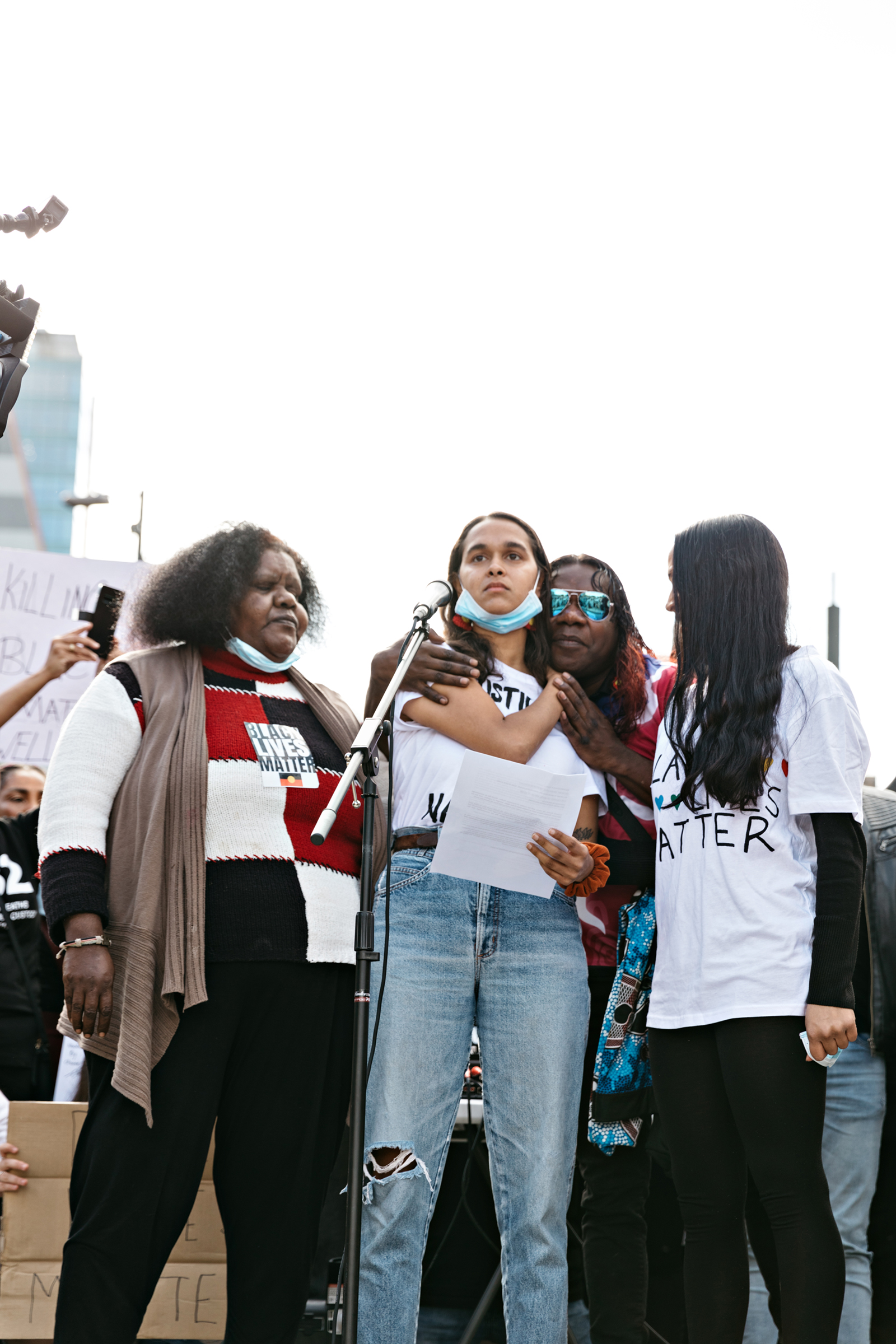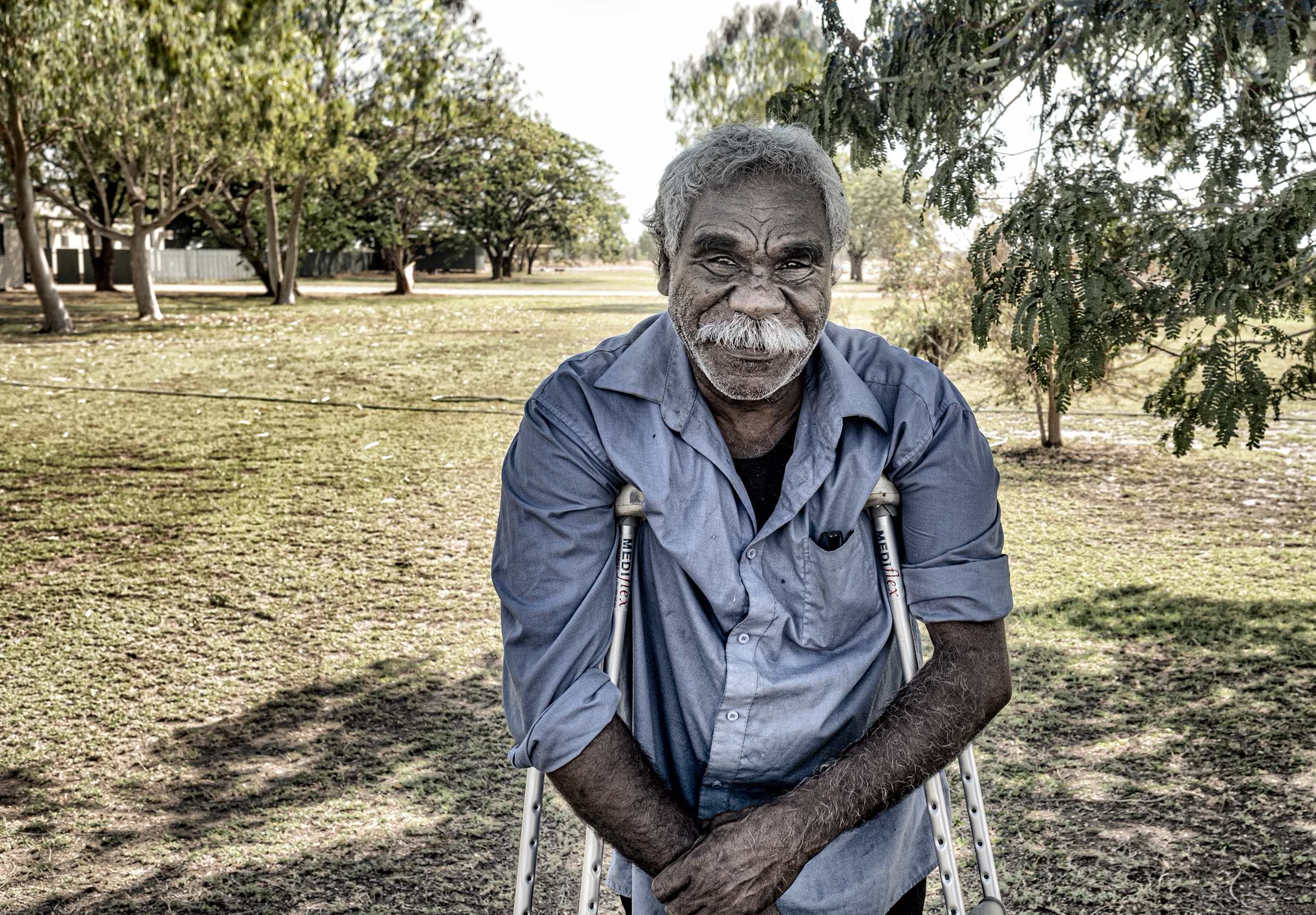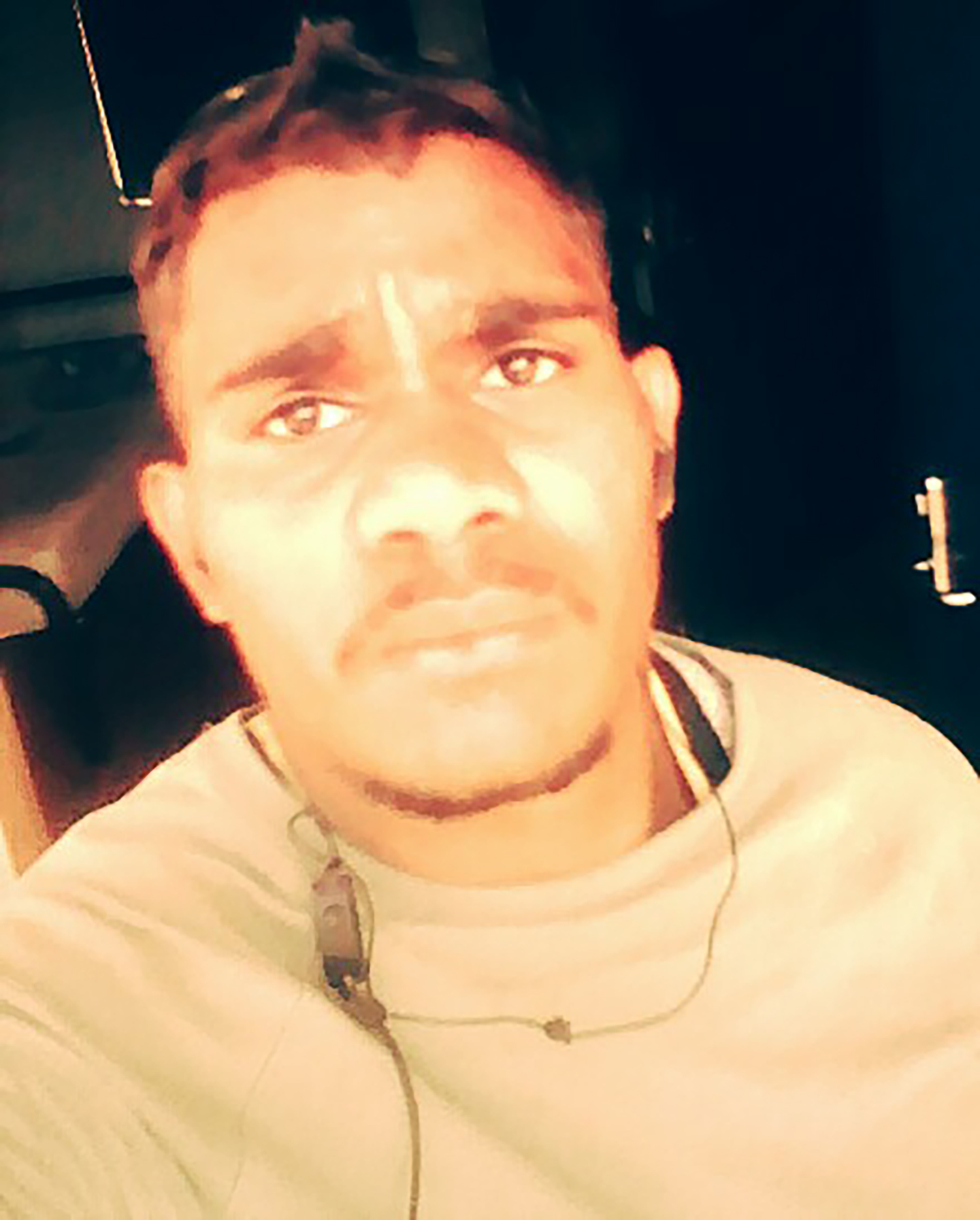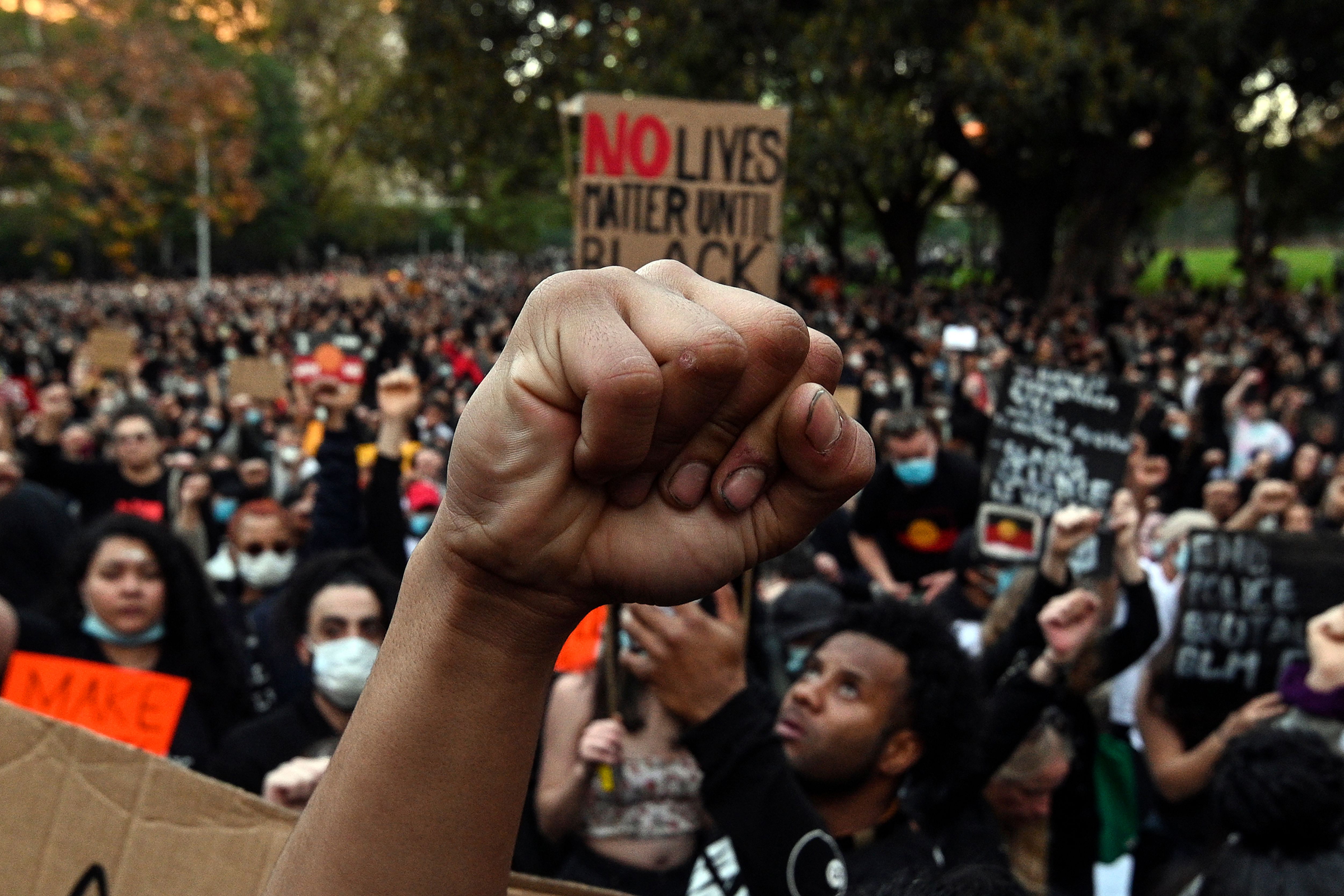Death has a sound in Yuendumu, a red-dirt town in the middle of Australia’s sparsely populated Northern Territory. The haunting ritual wailing, to mark the death of a loved one, permeates Samara Fernandez-Brown’s memories of the town her family is from.
The 22-year-old lives in the southern city of Adelaide, but she traveled 1,100 miles to the town of 800 residents—nearly all of whom are Aboriginal people called the Warlpiri—on Nov. 9, 2019 to attend her grandfather’s funeral. When she heard crying on the evening of the memorial, she assumed it was to mourn him. She soon learned the sobs were for someone else: her 19-year-old cousin Kumanjayi Walker.
Just hours earlier, four officers from a special police unit and a dog handler from Alice Springs, the closest major town at some 200 miles away, had arrived in Yuendumu. Local officers had requested their help to arrest Walker—the subject of a warrant for violating his parole. Three days earlier, police said he had wielded an axe at the officers when they tried to take him into custody. Although a local sergeant had devised a plan to arrest Walker early the following morning, when he was likely to be asleep, the out-of-town officers entered Walker’s family home, which is known in town as “the red house” for its cinnamon hue, at about 7 p.m.
Body cam footage shows the officers grappling with Walker. Officer Zachary Rolfe was stabbed in the shoulder in the melee. The officers urged Walker to “drop the scissors”. After Rolfe fired three shots at close range, another officer can be heard saying: “Don’t f-ck around, I’ll f-cking smash you, mate.” “I’m going to kill you mob,” the teenager says. The officers retreated to the Yuendumu police station with a seriously wounded Walker in tow, leaving behind a bullet casing and a blood-spattered mattress.
Word of the botched arrest moved quickly through Yuendumu, which covers less than three square miles. Stunned family members, including Fernandez-Brown, and dozens of others went to the one-story police station. They spent hours outside pleading for information about Walker’s condition, but the officers responded by locking the doors and turning off the lights.
“No one knew what state he was in, no one knew if he was alive,” Fernandez-Brown tells TIME.
She went to bed late that night. When her mother’s cries woke her up, Fernandez-Brown knew that Walker was dead. Police admitted that although he had died around 9 p.m the previous night, they waited until the morning to reveal the news out of concern for the safety of officers in the town.
Walker’s death at the hands of police in Yuendumu reverberated across Australia in the days afterwards—sparking protests more than 1,500 miles away in Sydney and Melbourne. Four days after the shooting, Rolfe was charged with murder. But the Australian news cycle was soon overtaken by devastating bushfires, then the COVID-19 pandemic and attention waned.
Then came the killing of George Floyd in May. His death in Minneapolis, Minn. ignited a reckoning over racial inequality in the U.S. It also ignited protesters sympathetic to the Black Lives Matter movement to action on almost every continent. In Europe, it led to protesters tearing down statues of a slave trader in England and a Belgian king known for his savage rule of the Congo. In Indonesia, #PapuanLivesMatter trended on social media to raise awareness about discrimination against natives of West Papua.

In Australia, racial justice activists have focused renewed attention on the deaths of Aboriginal people in custody—an issue that has been studied and publicly discussed for decades, though deaths have continued. In June, tens of thousands defied COVID-19 restrictions to take to the streets in cities across the country. Alongside “Black Lives Matter” signs, protesters carried placards with the names of Aboriginal Australians who have died in custody, including signs reading “Justice for Walker.”
“The death of George Floyd has resurfaced a whole bunch of pain for my family and I. And a whole bunch of fight,” Fernandez-Brown told a large crowd gathered at a June 6 rally in Adelaide. “How are we talking about another Black death at the hands of the police. How?” she screamed, as the crowd responded with chants of “Shame!”
Although Australia, a nation of 26 million, has different challenges to the U.S., the country is struggling to resolve a crisis that will likely sound familiar to Americans who have taken to the streets calling for police to stop killing Black people. At least 441 Aboriginal people have died in custody in Australia since 1991, according to the Guardian. The deaths of Aboriginal and other Indigenous people accounted for 22% of prison deaths, according to one study. Aboriginal people are also more likely to be incarcerated; they are 28% of prisoners in 2019, despite only being 2 to 3% of the national population.
No police officer has been convicted for any of the deaths. But amid growing demands for police accountability and an end to Aboriginal people dying in custody, a judge decided on Oct. 26 that the officer who killed Walker must stand trial for murder. Rolfe, a decorated officer with a military service record, will be the first member of law enforcement to face trial for an Aboriginal death in custody in the Northern Territory.
Read More: Why the Protests in the U.S. Are an Awakening for Non-Black People Around the World
Generations of trauma
Scientists believe Aboriginal people have inhabited Australia for more than 65,000 years, though many Indigenous groups say they have been there forever. Between 750,000 to 1 million people comprised of hundreds of nation groups with distinct beliefs and languages lived on the continent before British colonizers arrived in the late 18th century, declaring that the land belonged to no one and was theirs for the taking.
More than 300 massacres occurred over the next 142 years, perpetrated by British soldiers, police and settlers, and, later, native police commanded by white officers in an organized attempt to eradicate Aboriginal people. Imported diseases killed others. Aboriginal people were pushed off of their land onto government reserves. By 1921, the Aboriginal population had declined to only 72,000.
Those who survived colonization were treated as second-class citizens. In the 1900s, they were subject to curfews in some major cities and faced segregation on school buses, in swimming pools and in movie theaters. Between one in three and one in 10 Aboriginal children were forcibly removed from their families and communities from approximately 1910 until 1970; members of the so-called Stolen Generations were placed in church missions and other institutions—many banned from speaking their native languages—in a bid to assimilate them into white society. Aboriginal Australians were only granted the right to vote in national elections in 1962.
Australia is still reckoning with the violence of its colonial past. In 2008, the government formally apologized for the mistreatment of the Stolen Generations following a years-long campaign by activists. But trauma has been passed down through generations.


Many Aboriginal people have been left behind as Australia became one of the richest and healthiest nations in the world. Today, only about 59% of Aboriginal people graduate high from school, compared with 84% of non-Aboriginal Australians. They are 14 times more likely to be homeless. They earn about 33% less and face unemployment rates almost twice as high. They are more likely to struggle with mental health issues, four times more likely to die by suicide, and they live, on average, 8 fewer years than other Australians. And Aboriginal people are more likely to be incarcerated. In the Northern Territory, where Yuendumu is located, Aboriginal people accounted for 83% of the prison population in 2019. All 24 of the children in detention last year in the region were Aboriginal.
Prime Minister Scott Morrison said in June that reducing the incarceration rate is a complex and difficult task: “It’s health policy, it’s youth policy, it’s a suicide policy, it’s employment policy, it’s welfare policy—this is an incredibly complicated area and not all Indigenous experiences are the same,” he said. “There is no shortage of funds being thrown at this issue, but clearly the application of funds by governments over decades and decades and decades is not getting the results we want.” Morrison also drew widespread criticism when he said that Australia had no history of slavery, a false claim he later walked back and apologized for.
The Australian government said it spent more than $10 billion on Aboriginal people in its 2015 to 2016 budget, the majority of that through mainstream programs such as Medicare, social security payments, child care benefits and university support.
Read More: How George Floyd Is Sparking New Awareness in Australia of Aboriginal Deaths in Custody
‘Yapakurlangu Warnkaru Matters’
Yuendumu is small and remote. It has just a few shops, a police station and a swimming pool—a popular after-school hangout. But it also boasts its own media company, which produces local-language news and documentaries, and an art center that sells Aboriginal paintings. Singing can often be heard echoing out of one of several churches. Australian rules football, as well as a version of the game called “bush footy” played in the community, is an obsession. Warlpiri is the main language spoken, and Warlpiri traditions are a central part of life.
It has not escaped the problems of other Aboriginal communities. A gasoline-sniffing epidemic gripped the town in the mid-1990s. In 2010, family feud-related violence caused 100 residents to flee Yuendumu. The unemployment rate is about 50%. There are problems with housing, and the town is running out of water. Ned Jampijinpa Hargraves, a Warlpiri elder, says local education isn’t good and he worries about the future of the kids there, including his grandchildren. “You know, I’m just thinking about what they’re going to do to live, to survive, if there isn’t much education.”

But there is a strong sense of community. In the wake of Walker’s death, Yuendumu banded together to call for answers. Warlpiri elders called for calm. The community appointed lawyers from outside the Northern Territory to represent the family, who requested a Sydney prosecutor to handle the case. Walker’s cousin, Fernandez-Brown, was thrust into the role of an activist, a position she never thought she would have to assume.
Struggling to speak through tears at an Oct. 16 memorial service, Fernandez-Brown said: “I’ve been working really hard to spread the message and stay strong for justice for Walker.” In Yuendumu, a large painting hung near the entrance to the basketball court where Walker’s memorial service was held; it had a brown raised fist and the words “Yapakurlangu Warnkaru Matters,” the Warlpiri translation of “Black Lives Matter.”
‘A long history of police brutality’
The demands of Australian Black Lives Matter activists are broadly similar to those of their U.S. counterparts: They want money that goes to police departments redirected to fund communities; to reform bail laws and to examine why so many young Aboriginal people are pushed into a lifetime of cycling in and out of the prison system.
Many Aboriginal people identify as Black and say they recognize their own struggle for justice in the U.S. Black Lives Matter movement. Julie Andrews, a senior lecturer in Aboriginal studies at La Trobe University says that many Aboriginal people, including her, also have “the talk” with their children to warn them about the dangers they face from law enforcement due to racism. “There’s been a long history of police brutality,” she says. “We have those talks too.”
Karl Roberts, the chair of Policing and Criminal Justice at the University of Western Sydney, says that the Black Lives Matter movement may be increasing awareness of existing issues in Australia: “I don’t think it’s a, ‘Let’s get the cops right now attitude,’ but more the zeitgeist of, ‘There are systemic issues’ and ‘There are things we need to look at’ so when we come across these things they are a bit more likely to be taken seriously.”
But supporters of Rolfe, the 29-year-old police officer who has been charged with Walker’s murder, argue that the charges against him are politically-motivated—meant to appease an angry community and protesters in the streets. Rolfe’s lawyers say he opened fire in self-defense and in accordance to his training. During a September pre-trial hearing, his colleagues say they’d been taught the catchphrase “knife equals gun,” although one officer acknowledged that that didn’t necessarily mean the gun should be fired. The Police Federation of Australia, a union with more than 63,000 members, condemned the charges “following an incident in the course of [Rolfe’s] duties.” However, a criminologist told the same hearing that the second and third shots were “excessive, unreasonable and unnecessary.” (The Northern Territory police, the Northern Territory Police Association, and Rolfe’s lawyers declined to comment for this article).

‘There’s something broken there.’
A resurgence of COVID-19 put a damper on protests in Australia, and activists fear the momentum from Black Lives Matter to force meaningful criminal justice reform for Aboriginal people may be waning. (This is also a concern expressed by Black Lives Matter activists in the U.S., as COVID-19 and the U.S. election overtake the headlines.)
The demonstrations initially made some progress. New South Wales, the state where Australia’s largest city Sydney is located, launched a parliamentary inquiry into how deaths in custody are investigated and the state of South Australia made it mandatory for police to notify the state’s Aboriginal Legal Service whenever an Aboriginal person is taken into custody. In late July, the federal government announced a target of moving 15% of Indigenous adults out of jail by 2031.
There are now indications that the cases currently winding their way through the court systems will face a much higher level of public scrutiny than past cases have. The 2016 death of Wayne Fella Morrison, who was found blue and unresponsive after officers placed him face-down in the back of a prison van, bound and with a spit hood over his head, made national headlines at the time.
But a coroner’s hearing scheduled for August had to be delayed, in part because a bigger courtroom was needed. “Since the death of George Floyd in the United States…the [investigation] has attracted more publicity and media coverage,” the coroner said in a ruling.


Morrison’s name is among those that appeared on signs at rallies across the country in June. His sibling, Latoya Aroha Rule, who uses the pronoun they, says that they have been blown away by the level of public support. “Wayne’s name is up on banners in marches of tens of thousands of people. That’s not something I ever thought would be possible. It’s incredible,” Rule says.
But the push for reform is also meeting roadblocks. On July 27, at a meeting of Australian state Attorneys-General, a decision on a proposal to raise the age of criminal responsibility from 10 to 14 years old was deferred to 2021. And in August, a prosecutor decided not to pursue charges against officers involved in the death of Tanya Day, a 55-year-old Aboriginal woman who died after hitting her head several times in a jail cell in 2017 after being removed from a train for public drunkenness.
Walker’s family, at least, will now get their day in court. Fernandez-Brown says her family won’t settle for less than a prison sentence for Rolfe. “For my family, that’s all we’re holding on to,” she says. “I know in Australia, it’s unheard of, but we’re remaining very, very hopeful.”
She hopes that sets a precedent so that other families can get justice, and lead to systemic change: “When you’ve got this many deaths it’s no longer about individuals or bad eggs, it’s about the whole system, the chicken, there’s something broken there.”
More Must-Reads from TIME
- Donald Trump Is TIME's 2024 Person of the Year
- Why We Chose Trump as Person of the Year
- Is Intermittent Fasting Good or Bad for You?
- The 100 Must-Read Books of 2024
- The 20 Best Christmas TV Episodes
- Column: If Optimism Feels Ridiculous Now, Try Hope
- The Future of Climate Action Is Trade Policy
- Merle Bombardieri Is Helping People Make the Baby Decision
Write to Amy Gunia at amy.gunia@time.com
